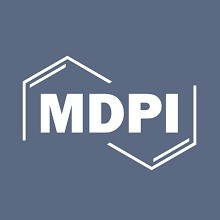
دانلود مقاله مدیریت زنجیره تامین تجارت الکترونیکی
چکیده
مقدمه
مروری بر مطالعات پیشین
شرح مشکل
رویکرد راه حل
مطالعه موردی
نتایج و بحث
نتیجه گیری و مطالعات آتی
منابع
Abstract
Introduction
Literature Review
Problem Description
Solution Approach
Case Study
Results and Discussion
Conclusions and Future Work
References
چکیده
پذیرش فناوری های دیجیتال در یک کسب و کار می تواند به مدیریت زنجیره تامین پایدار کمک کند. این فناوریها میتوانند توسعه تجارت الکترونیکی را سریعتر کرده و ظهور تجارت الکترونیک B2B را تقویت کنند. در این مطالعه، تمرکز ما ایجاد چارچوبی برای زنجیره تامین پایدار با اینترنت اشیا (IoT) برای ارائه اقلام نساجی با استفاده از مدل کسبوکار تجارت الکترونیک B2B بود. ما یک مدل برنامهریزی غیرخطی عدد صحیح مختلط (MINLP) را برای به حداقل رساندن هزینه کل زنجیره تامین، از جمله بستهبندی، جابجایی و حمل و نقل سفارشات B2B، با مالیات انتشار کربن، فرمول بندی کردیم. علاوه بر این، هزینه خرید برچسبهای RFID و امکانات اینترنت اشیا که در وسایل نقلیه حمل و نقل ارائه میشد، بالا بود. مدل پیشنهادی با استفاده از حلکننده سراسری در بسته نرمافزاری LINGO و یافتن ارزش بهینه کل هزینه شبکه زنجیره تامین حل شد. ما مدل پیشنهادی را در سناریوهای موردی مختلف، یعنی مشکلات کوچک تا قابل توجه، آزمایش کردیم. سپس، تجزیه و تحلیل حساسیت برای مشاهده تغییرات در هزینه کلی شبکه زنجیره تامین زمانی که تغییراتی در پارامترهای اصلی مدل پیشنهادی وجود داشت، انجام شد. نتایج مدل ها نشان داد که مدل ها می توانند برای برنامه ریزی لجستیک کارآمد و طراحی زنجیره تامین مفید باشند.
توجه! این متن ترجمه ماشینی بوده و توسط مترجمین ای ترجمه، ترجمه نشده است.
Abstract
Adopting digital technologies in a business can help with sustainable supply chain management. These technologies can make e-commerce development faster and empower the emergence of B2B e-commerce businesses. In this study, our focus was to develop a framework for an Internet of things (IoT) embedded sustainable supply chain to deliver textile items using a B2B e-commerce business model. We formulated a mixed-integer non-linear programming (MINLP) model to minimize the total supply chain cost, including the B2B orders’ packaging, handling, and transportation, with carbon emission taxation. Furthermore, the purchasing cost of the RFID tags and IoT facilities that were provided on the transport vehicles was high. The proposed model was solved by using the global solver in the LINGO software package and finding the optimized value of the total supply chain network cost. We tested the proposed model in different case scenarios, i.e., small- to significant-sized problems. Then, a sensitivity analysis was performed to observe the variations in the overall cost of the supply chain network when there were changes in the main parameters of the proposed model. The results of the models showed that models can be helpful for efficient logistics planning and supply chain design.
Introduction
The textile industry is responsible for the design, production, and distribution of cloth and yarn. According to a Statista report by Ziyan Zhang, the growth of the Indian textile industry increased by 8.7% from the fiscal year 2015 to the fiscal year 2020, which is more than the last observation, which was 7% from the fiscal year 2010 to the fiscal year 2015 [1]. Traditionally, the textile industry is known as a major polluter, resulting in various environmental degradation, including water pollution, greenhouse emission, and various other hazardous health impacts. It is essential to reduce these related environmental degradation aspects. Sustainable practices can help in achieving this. Various sustainable practices include less water usage, less use of fertilizers and pesticides, and using the 3R’s, i.e., the reduce, reuse, and recycle philosophy. The key player of the fourth revolution of industry (Industry 4.0) is the IoT, which improves visibility and communication across the whole supply chain and logistics value chain [2]. Industry 4.0 has been accepted as the most critical factor and plays a significant role in the era of digitalization [3]. In the era of Industry 4.0, there are three major barriers, namely, a lack of research and development, poor infrastructure, and a non-supportive policy ecosystem [4]. In digital technologies, including IoT, blockchain, AI, and cloud computing, robust development stresses a suitable decision model for an efficient inter-organizational information systems adoption process [5]. A smart manufacturing plant prefers the practice of innovative advancements in digital technology, “including the IoT, cloud computing, hi-tech sensors, AI, data capture and analytics, digital fabrication, and other innovative mobile devices, models of marketing, platforms that use algorithms to direct motor vehicles (including ride-sharing apps, autonomous vehicles, and ride services), and implanting altogether in an interoperable worldwide value chain, shared by several industries from various nations” [6].
Conclusions and Future Work
In this study, we focused on IoT embedded sustainable supply chain problems for the textile businesses, i.e., the manufacturing plants and wholesalers. We developed a framework for the considered problem and formulated an MINLP optimization model that helped to minimize the total cost of the virtual supply chain network. The proposed model captured the problems related to the order packaging, handling, and transportation of textile products from manufacturers to wholesalers. Furthermore, the implementation of the IoT facilities in the transport vehicles and purchasing the RFID tags were also considered. The proposed MINLP model was solved by using a GLOBAL solver in the LINGO 19 software package and the optimized value of total cost was found for all the case scenarios.
